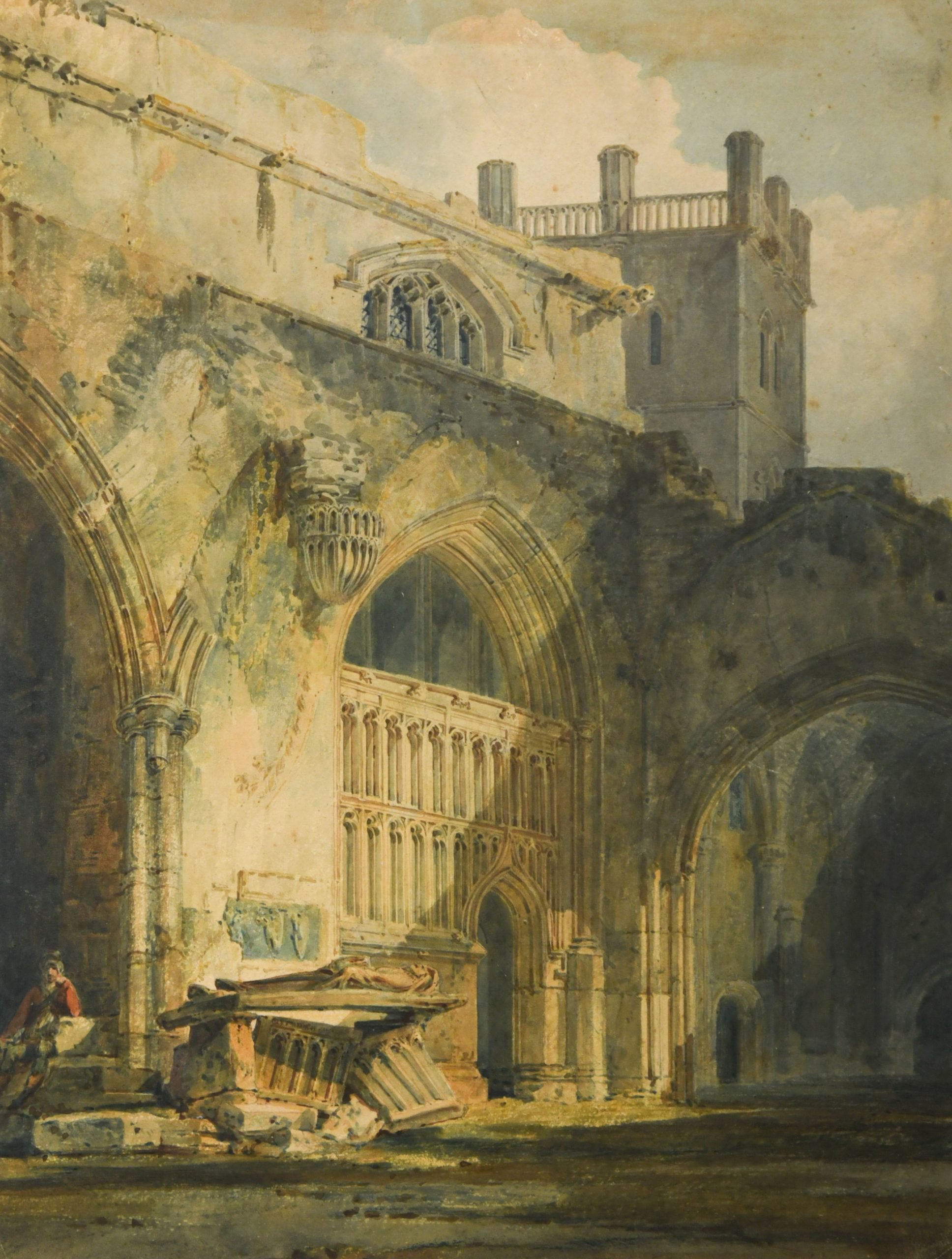
Last year, one lucky British family found out that an artwork they snatched up for a bargain at auction is actually a long-lost watercolor by English Romantic painter J. M. W. Turner. On March 20, the recently discovered relic will hit the block for the first time in 30 years alongside dishware, furniture, and more at the Fine Sale, an annual auction sale at Cheffins in Cambridge, England. Turner’s work, tagged with an estimate of £20,000–£30,000 ($25,000–$38,000), leads the lineup.
Turner painted this rendition of St. David’s Cathedral at age 20, during an early, well-documented trip through Wales. According to Cheffins, the painting is the sole architectural study Turner devoted to the 16th-century chapel, rendering the cathedral’s entrance with excruciating detail and compelling lighting.
Verso of the new watercolor featuring Turner’s title and signature. Courtesy of Cheffins.
The family consigning the work has chosen to stay anonymous, though not without sharing their story. The watercolor was among a group of paintings they acquired at a Suffolk auction in 1990 for £100—roughly £235 ($299) today. The family noticed the enchanting watercolor was signed “W. Turner,” but didn’t investigate further until a 2022 visit to St. David’s Cathedral “rekindled” their interest in the work’s origins.
“We turned to the Tate Clore Gallery website and discovered the Turner sketch relating to our watercolor,” they explained in a statement, citing an unfinished, identically composed work of graphite on paper that the Tate acquired with the Turner Bequest of 1856. Turner expert Andrew Wilton appraised the work, and verified its new superstar attribution.
JMW Turner, St David’s: The Ruins of St Mary’s Chapel and the Entrance to Bishop Vaughan’s Chapel (1795). Photo: © Tate.
The family brought the piece to Cheffins due to the house’s experience with this precise type of work. The star of last year’s Fine Sale was another then-unseen Turner watercolor that had languished for over 70 years in a private collection. That painting, which depicts Chepstow Castle, sold for £90,000 ($114,000)—nearly double the house’s estimate of £30,000 to £50,000 ($30,000–$63,000).
Turner’s watercolors are enjoying a moment. This month, Minster Auctions in England’s West Midlands is offering another freshly discovered Turner watercolor that once belonged to landowner John Arkwright. The work turned up last month in an attic near its subject—Hampton Court Castle in Herefordshire.
Cheffins associate Patricia Cross posits that the internet is empowering this spate of discoveries. “Collectors are becoming more familiar with Turner’s early style thanks to the increasing accessibility of his sketches, drawings, and watercolors,” Cross told me. “When the present watercolor was acquired by the current owners in the early 1990s, it was not common knowledge that early in his career, Turner simply signed his works ‘W Turner’ and even now most of us are familiar with him as ‘JMW Turner.’”
Financial gain is spurring the trend, too. “The high prices that these early watercolors command on the current market certainly help encourage certain collectors to offer them on the open market,” Cross added.